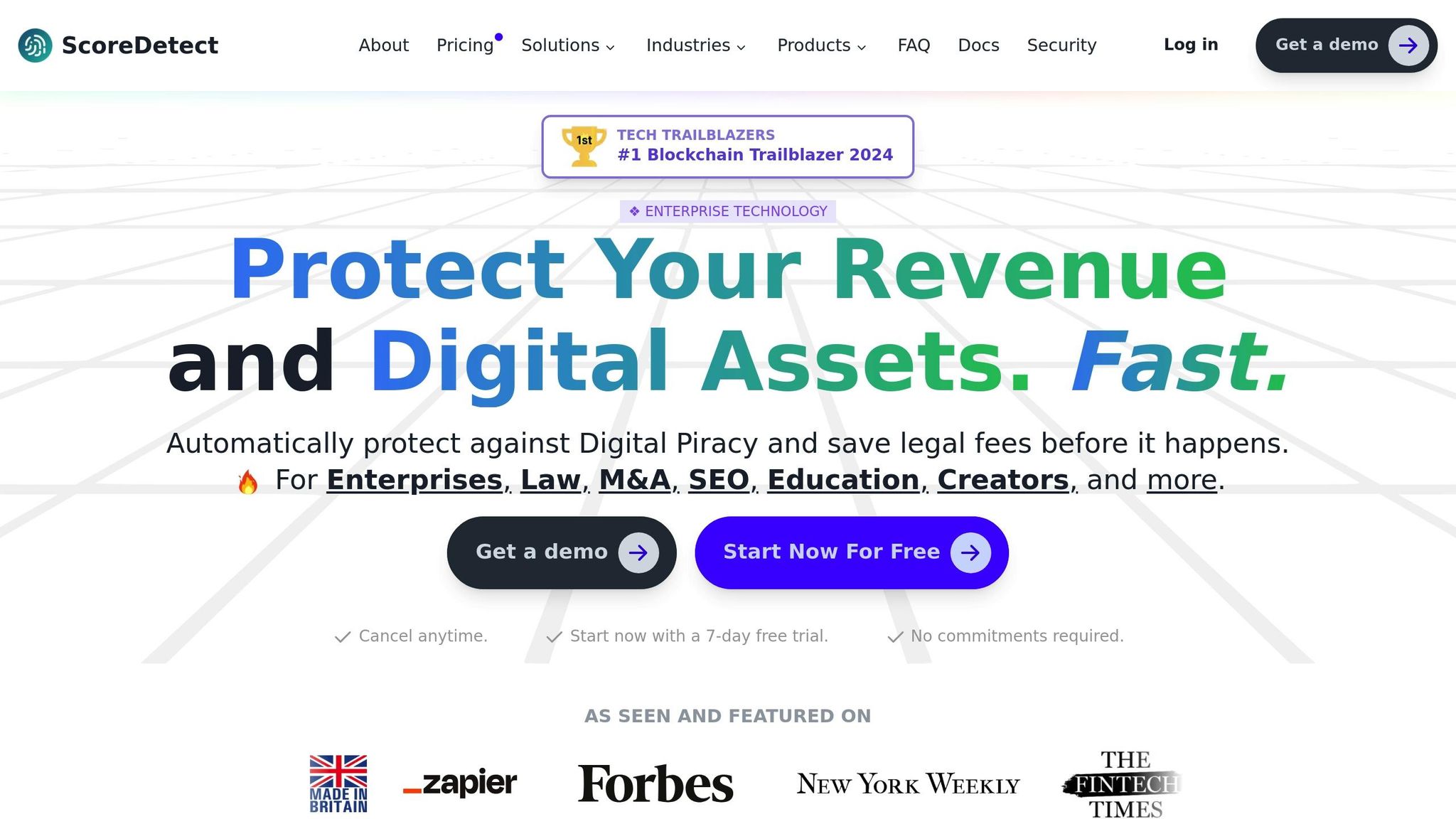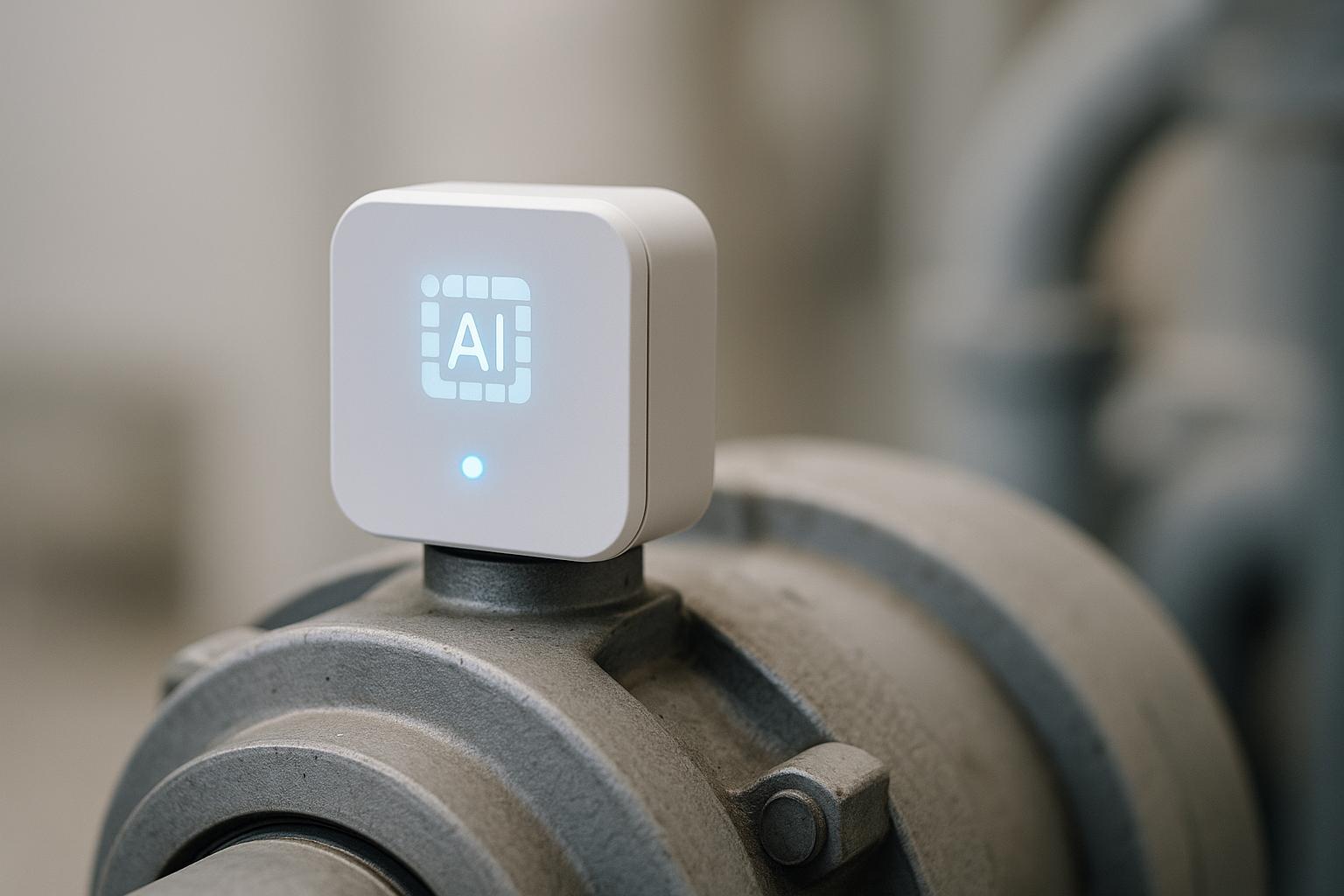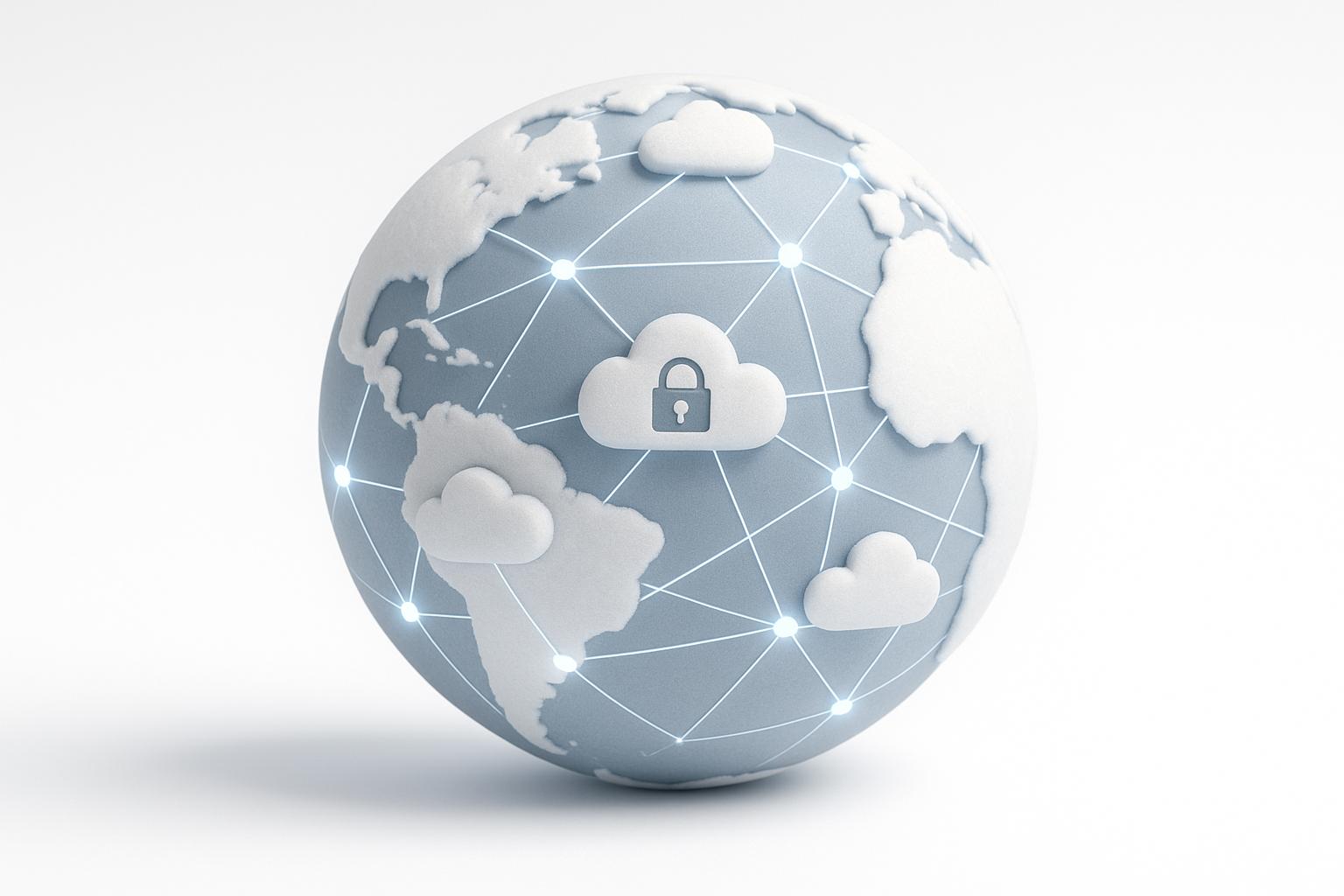AI is transforming how companies protect digital content by automating the detection and removal of copyright violations. It handles massive volumes of data, reduces errors, and improves efficiency in ways manual methods can’t match. Here’s what you need to know:
- AI tackles piracy at scale: Systems analyze text, images, and videos to identify infringements, even if content is altered.
- Improved accuracy: AI reduces false positives by learning from past decisions and understanding context.
- Faster processes: Automated tools speed up takedown actions, saving time and resources.
- Key technologies: Machine learning, natural language processing, computer vision, and blockchain power these systems.
- Industries benefiting: Media, education, legal services, and cybersecurity use AI to safeguard content and data.
AI doesn’t work alone – it pairs with human expertise to handle complex cases, ensuring fairness and precision. Companies like ScoreDetect lead in this space by combining advanced AI with tools like blockchain for proof of ownership. As piracy tactics evolve, AI systems will continue adapting, offering better protection for digital assets.
When AI Meets Identity Protection: The Full Story of Loti‘s Internet Takedown Service

Key AI Technologies for Takedown Monitoring
A variety of advanced AI technologies come together to power takedown monitoring systems. Each plays a distinct role, and when combined, they create a cohesive solution capable of detecting, analyzing, and responding to copyright infringements with precision and speed. Here’s how these technologies contribute to building effective monitoring systems.
Machine Learning and Pattern Recognition
Machine learning is the foundation of modern takedown monitoring systems. These algorithms sift through enormous datasets to identify unauthorized content by recognizing patterns and making automated decisions [2]. Using both supervised and unsupervised learning methods, machine learning pinpoints rights violations with impressive precision.
"Machine learning techniques enable automated content identification, pattern recognition, and adaptive learning for evolving infringement detection." – aaronhall.com [2]
Machine learning systems improve over time by analyzing past decisions and adapting to new infringement patterns. For instance, content fingerprinting creates unique digital identifiers for protected material, while behavioral analysis flags suspicious activities, such as unusual sharing patterns that might indicate piracy.
In the streaming industry, real-time watermarking and behavioral analytics have cut content piracy by over 30% [2]. Similarly, in publishing, machine learning models have reduced unauthorized e-book sharing, boosting legitimate sales by 15% [2].
Pattern recognition also excels at spotting duplicated or subtly altered content, making it invaluable for detecting sophisticated infringement attempts. These systems evolve to counter new tactics, ensuring they stay one step ahead of infringers.
Natural Language Processing for Content Analysis
Natural Language Processing (NLP) transforms how takedown systems handle text-based content. Unlike basic keyword matching, NLP captures the context and meaning of text, making it possible to detect paraphrased or translated material.
By analyzing vast amounts of text – from social media posts to academic papers – NLP identifies subtle variations that signal unauthorized use. This deeper understanding reduces false positives while catching infringements that traditional methods might miss.
NLP also examines metadata and user-generated content, uncovering patterns in how pirated materials are described or tagged. This insight allows for more precise and effective takedown efforts.
Computer Vision for Media Detection
Computer vision focuses on identifying visual content, such as images and videos, that may have been copied or altered. This technology can detect copyrighted material even when it’s cropped, filtered, rotated, or otherwise modified. By creating digital fingerprints for protected visuals, computer vision systems track matches across countless platforms.
These systems analyze visual elements like colors, textures, shapes, and composition to identify changes, such as overlaid text or altered playback speeds. They work in real time, scanning both images and videos to ensure even fleeting appearances of unauthorized content are flagged.
AI-Powered Web Scraping
AI-powered web scraping takes content discovery to the next level. Unlike traditional scraping tools, these systems adapt to dynamic websites, navigate complex structures, and bypass common anti-scraping measures [4].
"Digital rights enforcement algorithms detect unauthorized content use by analyzing data streams and metadata against predefined infringement criteria." – aaronhall.com [2]
Modern websites often deploy defenses like IP blacklisting, JavaScript challenges, and CAPTCHAs [3]. AI scrapers overcome these obstacles by mimicking human browsing behaviors, such as adjusting click patterns and browsing speeds.
With the internet generating 2.5 quintillion bytes of data in 2021 alone [4], AI scrapers even analyze visual elements on web pages, identifying content embedded in images or non-standard formats. This adaptability ensures they can uncover unauthorized material across an ever-changing digital landscape.
Blockchain for Content Verification
Blockchain technology adds a layer of security and transparency to takedown monitoring systems. By storing checksums of content on an immutable ledger, blockchain provides verifiable proof of ownership without needing to store the actual digital files.
This tamper-proof system creates an audit trail for takedown actions, simplifies ownership verification, and ensures accountability. Blockchain also enables automated workflows – such as smart contracts – that trigger takedown processes upon detecting unauthorized use.
For example, ScoreDetect uses blockchain via a WordPress plugin to generate ownership proofs, bolstering copyright protection while improving SEO. Together, blockchain and AI create a seamless content protection ecosystem.
These AI technologies work in harmony to form a robust framework, enabling takedown monitoring systems to operate with greater efficiency and accuracy.
Research Findings on AI Takedown Monitoring
Recent research highlights how AI-powered takedown monitoring systems outperform traditional methods in terms of accuracy, speed, and overall efficiency. Studies spanning various industries show measurable improvements when organizations adopt AI-driven content protection strategies.
Improved Detection Accuracy with Fewer False Positives
AI systems are exceptionally skilled at distinguishing between legitimate content and actual infringements, which helps lighten the workload for security teams. These systems process enormous volumes of data with contextual accuracy. Unlike traditional methods that rely on static, pre-defined signatures and often struggle with new, evolving threats, AI analyzes large datasets to spot subtle anomalies [5].
What sets AI apart is its ability to learn and adapt. Through continuous updates and human feedback, these systems improve detection accuracy while significantly reducing false positives [6]. This means fewer unnecessary alerts for security teams and fewer harmful instances slipping through undetected (false negatives) [6]. AI also leverages historical attack data and threat intelligence to identify patterns and predict future risks with greater precision [5].
With an estimated 463 exabytes of data expected to be generated daily by 2025 [6], AI systems are built to handle this scale. They automate alert analysis, filter out false positives, and prioritize critical incidents [5]. Additionally, AI tracks user behavior for deviations from established norms, such as detecting insider threats [5]. These capabilities not only enhance detection accuracy but also enable quicker responses to flagged content.
Accelerated Takedown Processes
Speed is another area where AI-driven systems shine. They process real-time data, detect anomalies, and respond to incidents swiftly and effectively [8]. Automated threat detection dramatically reduces the time needed to identify potential attacks [8]. From the moment an issue is detected to its resolution, AI minimizes manual intervention, allowing security teams to focus on higher-priority tasks [8].
Traditional security measures often struggle to keep up with fast-evolving cyber threats [8]. In contrast, AI-driven tools enhance monitoring efficiency and protect trademarks with unmatched speed and precision [9]. For example, in the fashion and luxury goods industry, AI systems equipped with image recognition technology scan online platforms for counterfeit listings. Even when counterfeiters make slight modifications to original designs, AI can identify and flag these infringements for removal [9].
Challenges and Limitations of AI Systems
While AI systems have made significant strides, they are not without challenges. Errors can still occur in complex or ambiguous copyright scenarios, and edge cases may lead to occasional false positives. Regular audits and updates are necessary to address potential biases and maintain accuracy [7]. To optimize results, organizations should pair AI systems with human analysts who can monitor and respond to threats as needed [5]. The most effective strategy often combines AI with traditional methods, ensuring human oversight remains a key part of the process [5].
Integrating AI into existing systems can also pose technical challenges, requiring substantial resources [5]. Despite these hurdles, studies consistently show that AI systems outperform traditional approaches, making them an indispensable tool for modern takedown monitoring efforts.
sbb-itb-738ac1e
AI Takedown Monitoring in Practice
AI-powered takedown monitoring is making waves across various industries, offering faster and more efficient ways to protect digital assets. By implementing advanced systems, organizations are finding new ways to safeguard their content, demonstrating the practical advantages of AI technology.
Industry Use Cases
Media and entertainment companies are using AI to fight piracy. These systems help identify and remove unauthorized videos, music, and other media from online platforms, cutting down on revenue losses caused by illegal distribution.
In academia, AI monitoring protects research and educational materials from being shared without permission. Universities use these tools to track down unauthorized postings of course materials, research papers, and proprietary content, ensuring the integrity of their work.
Legal firms rely on AI to monitor and protect sensitive documents and client information. These systems continuously search for misuse of confidential materials, which is especially critical for firms handling copyright cases.
Cybersecurity teams benefit from AI monitoring by quickly spotting data breaches. These tools can identify unauthorized access to sensitive information in real-time, enabling immediate action to minimize damage.
These examples highlight how AI not only improves detection accuracy but also speeds up the takedown process, aligning with earlier discussions about its transformative capabilities.
How ScoreDetect Uses AI

ScoreDetect is a standout example of how tailored AI solutions can protect digital content. Their approach involves four key steps:
- Prevention: Invisible, non-invasive watermarking is used to mark content for identification without affecting its quality.
- Discovery: Advanced web scraping tools, with a 95% success rate, bypass preventive measures to locate unauthorized content.
- Analysis: AI matches discovered content with the originals, providing clear evidence of unauthorized use.
- Takedown: Automated delisting notices are generated, achieving a remarkable 96% success rate.
ScoreDetect further strengthens its system with blockchain technology. By capturing content checksums, they create tamper-proof ownership records without storing the actual digital files. Additionally, their WordPress plugin automatically logs every published or updated article, providing verifiable proof of ownership on the blockchain while also improving SEO performance.
Scalability and Automation Benefits
AI tools bring scalability to content protection, automating processes that once required significant human effort. Traditional monitoring methods demanded more staff as content volumes grew, but AI allows organizations to oversee vast amounts of content across multiple platforms without adding to their workforce.
AI vs Traditional Monitoring Methods
The move from traditional monitoring techniques to AI-powered systems marks a major shift in how organizations safeguard their digital content. By comparing these two approaches, it becomes clear why many companies are opting for AI-based solutions. The advantages AI offers over manual systems are evident when examining their performance and capabilities.
Performance Comparison Metrics
The differences between AI and traditional monitoring methods are stark when you look at key performance metrics. Traditional systems, which rely heavily on manual reviews and basic detection tools, struggle to keep up with the demands of modern digital content protection.
| Metric | Traditional Monitoring | AI Monitoring Systems |
|---|---|---|
| Detection Speed | Slow (manual review required) | Fast (real-time processing) |
| Accuracy Rate | Moderate to low | High (up to 96%+ takedown rate) |
| Scalability | Limited by human resources | Highly scalable |
| False Positives/Negatives | High false positives | Significantly reduced |
| Resource Requirements | Labor-intensive | Automated, minimal manual effort |
Traditional systems often generate a high number of false alerts because they can’t effectively differentiate between legitimate and problematic content. AI systems, on the other hand, are designed to focus on specific patterns or indicators of unauthorized use. By doing so, they significantly cut down irrelevant alerts, addressing one of the biggest flaws of manual methods [10]. These metrics clearly demonstrate why AI is becoming the preferred choice for content protection.
AI System Advantages
AI monitoring systems bring several standout benefits that traditional methods simply can’t match. One of the most notable is speed. AI can process and analyze content in real-time or near real-time, enabling immediate detection and response to unauthorized activity. In contrast, manual reviews in traditional systems slow down the process, delaying action [10].
Accuracy is another area where AI excels. By leveraging advanced algorithms, AI systems achieve higher detection rates and fewer false positives. This is a significant improvement over traditional systems, which often rely on manual reviews or basic detection methods that can miss key details [10][11].
The scalability of AI systems is a game changer. Unlike traditional methods, which require more staff as monitoring needs grow, AI can handle vast amounts of content simultaneously. This allows organizations to expand their monitoring efforts without the burden of additional labor costs [10].
Resource efficiency is also a major advantage. While AI systems require an initial investment in technology and training, they drastically reduce the need for ongoing manual labor. Traditional systems might be cheaper to set up initially, but their reliance on human resources makes them more expensive over time as monitoring demands increase [10].
Experts in the field highlight how AI has reshaped monitoring by eliminating unnecessary noise and focusing on actionable alerts. This shift has enabled companies to broaden their monitoring capabilities and introduce new services without significantly increasing costs or staff, resulting in faster growth and improved service quality [10].
AI System Limitations
Despite its many benefits, AI systems do come with challenges. Data quality is a critical factor. If the training data used to develop AI models is poor or ambiguous, it can lead to reduced accuracy. Maintaining high-quality datasets is essential for achieving optimal performance [11].
Another challenge is the evolution of piracy tactics. Content thieves are constantly finding new ways to bypass detection, meaning AI systems need regular updates to stay effective. This requires ongoing adjustments to AI models and monitoring strategies.
Context understanding is another area where AI can fall short. Without human oversight, AI might miss subtle violations or nuanced situations, such as fair use cases, that require expert judgment. Even highly accurate AI systems may struggle with these complexities, highlighting the importance of combining AI automation with human expertise [11].
The key to success lies in striking the right balance. AI can handle routine tasks efficiently, but human oversight remains crucial for addressing complex cases where deeper contextual understanding is required. This combination ensures robust and effective monitoring.
The Future of AI in Takedown Monitoring
AI is reshaping takedown monitoring, offering improved accuracy and efficiency to keep pace with the ever-growing digital landscape. As online content proliferates and piracy methods evolve, AI systems are adapting to meet these challenges head-on. This dynamic shift is unlocking new opportunities for detection and proactive content management.
Key Takeaways
AI has revolutionized takedown monitoring by making detection faster and more precise. Real-time detection allows for immediate identification and response to copyright infringements, reducing the time window for content theft.
These systems also excel at handling large volumes of data simultaneously, enabling swift action against unauthorized use. With their ability to scale effortlessly, AI-powered tools manage increasing content loads without requiring more human resources. This combination of speed, accuracy, and scalability is paving the way for predictive and integrated advancements in takedown monitoring.
Future Developments and Adaptation
The next phase of AI in takedown monitoring will focus on proactive and predictive strategies. For example, predictive compliance tools are emerging to flag content likely to cause disputes before any infringement occurs [1]. AI-driven mediation tools are also being developed to simplify dispute resolution by analyzing evidence from all parties involved [1].
Real-time monitoring is now sophisticated enough to detect and address violations during livestreams [1]. Meanwhile, the integration of blockchain technology is enhancing transparency, with AI verifying blockchain-based ownership records to ensure compliance [1].
On the horizon are personalized AI tools designed for content creators, helping them manage copyright compliance independently. Additionally, AI-driven automation may simplify licensing negotiations between creators and rights holders [1]. However, the rise of generative AI introduces new challenges, as brands now rely on AI algorithms trained to identify AI-generated content and use predictive analytics to anticipate potential threats [12].
ScoreDetect’s Role in AI Content Protection
Amid these advancements, companies like ScoreDetect are leading the charge in AI-driven content protection. By leveraging cutting-edge technology, ScoreDetect showcases how modern AI can be applied effectively to safeguard digital assets.
ScoreDetect incorporates blockchain to provide verifiable ownership proof, emphasizing its forward-thinking approach. Its multi-layered strategy covers the entire content protection process – from invisible watermarking and intelligent web scraping to automated workflows integrated with over 6,000 web applications and a dedicated WordPress plugin.
As hybrid AI-human collaboration becomes the industry standard [13], ScoreDetect exemplifies this approach by combining advanced AI automation with human oversight. Serving industries ranging from education and healthcare to finance and entertainment, ScoreDetect sets a high bar for what AI-powered takedown monitoring can achieve.
The future of takedown monitoring lies in the seamless blend of predictive tools, real-time capabilities, and integration across digital platforms, positioning AI as an essential force in content protection.
FAQs
How does AI make copyright infringement detection more accurate and efficient?
AI has transformed the way copyright infringements are detected, offering a faster and more precise approach to analyzing vast amounts of digital content. Traditional methods often depended on manual reviews or rigid rules, which could miss subtle violations or flag innocent content by mistake. In contrast, AI leverages advanced algorithms and pattern recognition to pinpoint even the most minor cases of unauthorized use with impressive accuracy.
By automating these complex tasks and handling them at scale, AI not only minimizes errors but also significantly accelerates the detection process. This allows content creators and businesses to safeguard their intellectual property more effectively and efficiently.
How does blockchain improve the accuracy and security of AI-driven takedown monitoring?
Blockchain technology boosts AI-driven takedown monitoring by providing a secure and unalterable record of content ownership and digital checksums. This guarantees the integrity of the data and allows for swift and dependable verification of unauthorized use. When paired with AI, it simplifies the takedown process, making it quicker, more precise, and reliable.
How do AI-driven takedown systems stay ahead of evolving piracy tactics?
AI-driven takedown systems use machine learning and advanced pattern recognition to keep up with the constantly changing tactics of piracy. These technologies enable the systems to learn from new methods of infringement and adjust their detection strategies almost instantly.
By processing massive amounts of data, AI can spot new threats, identify unauthorized content, and act quickly to mitigate risks. Tools like digital watermarking and automated content removal add another layer of precision, allowing these systems to tackle piracy effectively, even as criminals adapt their approaches.

